
-
Find the right food for your pet
Take this quiz to see which food may be the best for your furry friend.
Find the right food for your pet
Take this quiz to see which food may be the best for your furry friend.
Featured products
 Small & Mini Savory Stew with Chicken & Vegetables Dog Food
Small & Mini Savory Stew with Chicken & Vegetables Dog FoodA delicious complement to the nutrition of Science Diet Small & Mini 7+ dog food
Shop Now Adult 7+ Perfect Digestion Chicken, Whole Oats & Brown Rice Recipe Dog Food
Adult 7+ Perfect Digestion Chicken, Whole Oats & Brown Rice Recipe Dog FoodScience Diet's breakthrough nutrition supports ultimate digestive well-being & healthy microbiome for dogs age 7+
Shop Now Adult Healthy Cuisine Roasted Chicken, Carrots & Spinach Stew Dog Food
Adult Healthy Cuisine Roasted Chicken, Carrots & Spinach Stew Dog FoodDelicious roasted chicken paired with tender vegetables in a succulent stew
Shop NowFeatured products
 Adult 7+ Tender Tuna Dinner Cat Food
Adult 7+ Tender Tuna Dinner Cat FoodWith delicious chunks in a decadent gravy
Shop Now Adult Savory Entrée Can Variety Pack Cat Food
Adult Savory Entrée Can Variety Pack Cat FoodPrecisely balanced nutrition with the delicious taste of savory minced chicken to help fuel the energy needs of cats during the prime of their life
Shop Now Adult 7+ Senior Vitality Chicken & Vegetable Stew Cat Food
Adult 7+ Senior Vitality Chicken & Vegetable Stew Cat FoodImproves Everyday Ability to Get Up & Go
Shop Now -
Dog
- Dog Tips & Articles
-
Health Category
- Weight
- Food & Environmental Sensitivities
- Urinary
- Digestive
- Joint
- Kidney
-
Life Stage
- Puppy Nutrition
- Adult Nutrition
- Senior Nutrition
Cat
- Cat Tips & Articles
-
Health Category
- Weight
- Skin & Food Sensitivities
- Urinary
- Digestive
- Kidney
-
Life Stage
- Kitten Nutrition
- Adult Nutrition
Featured articles
 Why Are Dogs and Cats So Cute?
Why Are Dogs and Cats So Cute?If waggy puppy dog tails and furry kitten yawns make you swoon, you're not alone. Why are cats so cute? And, dogs too! Let's find out!
Read More Does My Pet Hate Me?
Does My Pet Hate Me?Learn tips for bonding with your pet if you've ever thought, 'My dog doesn't like me, or 'Why do I have a standoffish cat?'
Read More Do Dogs and Cats have Belly Buttons?
Do Dogs and Cats have Belly Buttons?Learn whether cats & dogs have belly buttons like humans, what the function is, and if there are any health concerns associated with it.
Read More -


Keeping your cat's health in tip-top shape isn't always easy, especially when they're extremely adept at hiding an illness. So how can you detect when your feline friend isn't feeling so hot? Being familiar with baseline vitals, such as what a normal cat temperature is and how many beats per minute indicate a healthy cat heart rate, can help you get a pulse on your pet's health.
What Are Normal Vital Signs for Cats?
Checking your cat's vital signs at home is a great way to gauge their health, particularly if you feel they've been acting a bit off. The baseline vitals, or what's considered "normal" for cats, are as follows:
- Body temperature: Between 99 and 102.5 degrees Fahrenheit (37.2 - 39.2 degrees Celcius)
- Respiratory rate: An average of 20 to 30 breaths per minute
- Heart rate: About 160 to 180 beats per minute (this will vary based on level activity, age and fitness)
- Blood pressure: Between 120 and 130 mmHg (millimeters of Mercury)
How to Check Your Cat's Vitals
To ensure you're checking these vitals correctly, you'll want to ask your vet for guidance. With that being said, here are some basic tips for monitoring your cat's health, the tools you'll need to check each of these four vital signs, and what abnormal readings may indicate.
1. Temperature
There are two ways to determine if your pet has a normal cat temperature; unfortunately, your cat is probably not going to like either one. Pro tip: Recruit a friend to hold your kitty during these delicate procedures, suggests Cat Health.
- Rectal: Rectal temperatures are more accurate than ear temperatures. For this method, hold your cat comfortably, ensuring their back legs are supported. Use a rectal thermometer and cover the flexible tip with a lubricant, such as petroleum jelly. Gently insert the thermometer into their rectum, just past the tip of the thermometer and no further or you'll risk injury. Hold the thermometer steady until it beeps, then gently remove it to view the reading.
- Ear: Use a digital ear thermometer for ear temperature readings. Note: You do not need lubrication for ear readings. Hold the tool at a 90-degree angle and be careful not to damage your kitty's eardrum. When the thermometer beeps, gently remove it and check to see if it's within a normal cat temperature range.
An elevated temperature, especially when coupled with symptoms such as weakness, rapid heartbeat and panting, can be indicative of illness — yes, cats do get fevers. Fevers can alert you to the presence of a bacterial infection, inflammation or dehydration, among other issues. Contact your vet right away for advice and treatment options should you suspect a fever.
2. Respiratory Rate
To evaluate your cat's breathing at home, they need to be in a resting state — that is, asleep or awake, but not running around. Have your phone or a watch handy to time their breaths to the second. "Normal respiratory effort in a resting dog or cat means the sides of the chest rise and fall at a regular rhythm," according to Brewster Veterinary Hospital.
Stand a foot or two away from your kitty in order to see both sides of their chest. Time their breathing to see if it matches up with average vitals and to ensure that their breathing isn't labored. You can also hold your hands gently on their chest to feel the rhythm of their breathing.
Vets are notorious for being able to "read" a respiratory rate just by looking at an animal. But cats can get nervous at a checkup, experiencing exaggerated breathing that while easier to monitor, may lead to a potentially inaccurate assessment. At home, consider filming your cat in a resting state to help you — and your vet, too — better determine what your cat's normal respiratory rate is, suggests researchers in the Department of Clinical Science of Companion Animals at Utrecht University in the Netherlands.
The two leading causes of breathing difficulties in cats are asthma and congestive heart failure, according to the Cummings School of Veterinary Medicine at Tufts University. To be safe, consider bringing your kitty to an emergency clinic if you notice any shortness of breath. Just like humans, cats are susceptible to upper respiratory infections, colds and the flu, so keep an eye out for sneezing, lethargy, a runny nose and breathing irregularities.


Tasty Tips
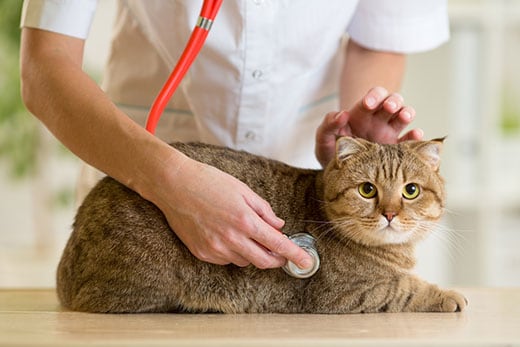
3. Heart Rate
There is a correlation between cat heart rate and blood pressure — and it's easy to get the two mixed up. "While your blood pressure is the force of your blood moving through your blood vessels, your heart rate is the number of times your heart beats per minute," explains the American Heart Association.
The best way to check your cat's heart rate is with a stethoscope — a task pet care experts advise leaving to the vet. However, you can check this vital at home by placing your hands gently on your cat's rib cage to feel their pulse. This will give you a general idea of whether their heart rate is too fast, too slow, or just right.
If you notice any heartbeat abnormalities, it could be due to a heart murmur — an indicator of heart disease — explains researchers at the World Small Animal Veterinary Association. If you suspect any heart issues, consider making a vet appointment.
4. Blood Pressure
Instead of using a stethoscope or a blood pressure cuff, your vet may use a Doppler probe to listen to your kitty's heart. Even if you have some of this equipment at home, Cardiac Care for Pets recommends your cat's blood pressure be checked at the vet, particularly if they're over the age of 7 or 8, taking prescription medication for heart issues, or are predisposed to heart issues.
Hypertension (high blood pressure) is common in older cats and can affect other parts of their body, including their brain and nervous system, eyes and kidneys, notes International Cat Care. Diagnosing hypertension early can slow down its progress and allow you to address any underlying illnesses.
Are There Different Vitals for Certain Cats?
Cats are predictably unpredictable. Temperament, size and lifestyle can differ greatly from one cat to another. While these factors can affect your cat's health, their vitals remain largely the same.
Experts continue to study whether living indoors or outdoors is a healthier situation for cats. Research published by The Royal Society Publishing finds that "cats with outdoor access were 2.77 times more likely to be infected with parasites than indoor-only cats." Because outdoor kitties are exposed to more parasites, they may get sick more often than their indoor counterparts.
Some breeds are just more susceptible to illness than others. Burmese and Maine coon, for example, are more likely than other cat breeds to have heart disease. But unlike dogs, cat vitals remain the same across the board — that is, unless you're looking at really big cats, like tigers and cheetahs. In short, whether yours is an indoor or outdoor cat, their vitals should fall within the normal range.
Why You Should Check Your Cat's Vital Signs
Taking your cat's vitals provides you with a better snapshot of their overall health and can give you peace of mind. Additionally, yearly vet checkups are vital to maintaining your cat's health. Senior cats should participate in biannual exams because as they age, their body changes more rapidly.
If your pet's vitals seem fine — i.e., a normal cat temperature, no breathing issues and the like — but you suspect they just aren't feeling well, don't hesitate to call your vet's office. No one knows your kitty as well as you do, so trust your intuition, so they can get the help they need sooner.


Christine O'Brien is a writer, mom, and long-time cat parent whose two Russian Blues rule the house. Her work also appears in Care.com, What to Expect, and Fit Pregnancy, where she writes about pets, pregnancy, and family life. Find and follow her on Instagram and Twitter @brovelliobrien.
Related products

Supports energy level and beautiful fur in mature cats

Improves Everyday Ability to Get Up & Go

Precisely balanced nutrition with the delicious taste of savory minced chicken to help fuel the energy needs of cats during the prime of their life

With delicious chunks in a decadent gravy
Related articles
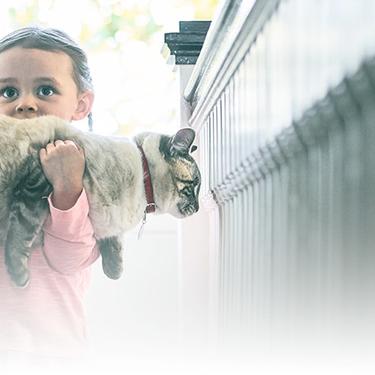
Discover how to identify cat sensitive skin and what you can do to help your cat thrive from head to paw.
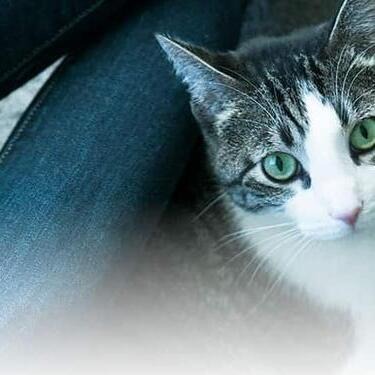
Brushing your cat's teeth is just as important as brushing your own. Learn signs or oral health problems in your cat and how to avoid them.
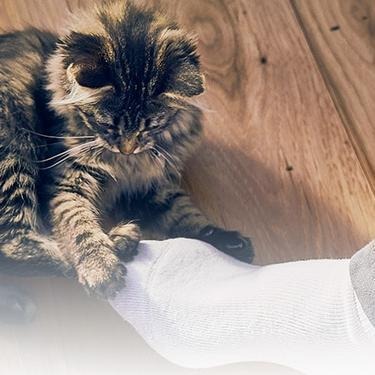
Discover which cat toys games your feline friend might like, and how they are great sources of exercise. Explore our library of articles to learn more.
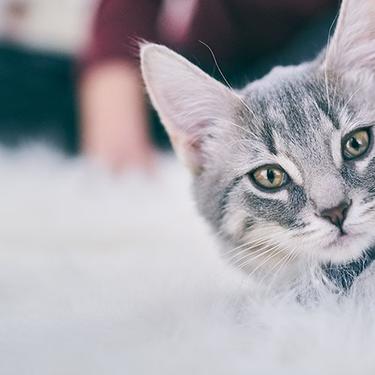
Discover the benefits of Hill's line of kitten foods and how they provide complete and balance nutrition for growing kittens.

Put your cat on a diet without them knowing
Our low calorie formula helps you control your cat's weight. It's packed with high-quality protein for building lean muscles, and made with purposeful ingredients for a flavorful, nutritious meal. Clinically proven antioxidants, Vitamin C+E, help promote a healthy immune system.
Put your cat on a diet without them knowing
Our low calorie formula helps you control your cat's weight. It's packed with high-quality protein for building lean muscles, and made with purposeful ingredients for a flavorful, nutritious meal. Clinically proven antioxidants, Vitamin C+E, help promote a healthy immune system.

